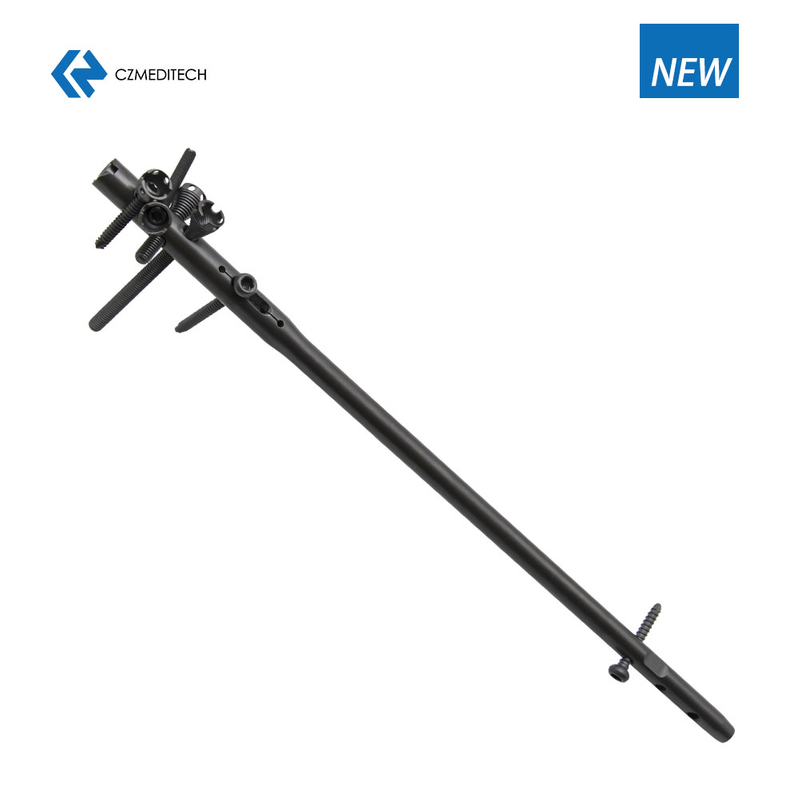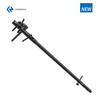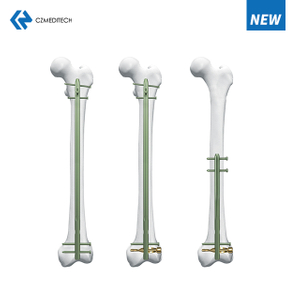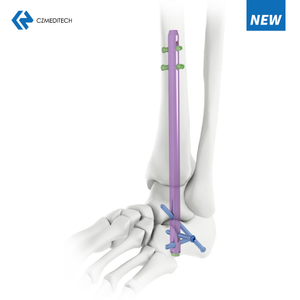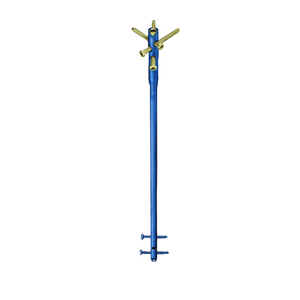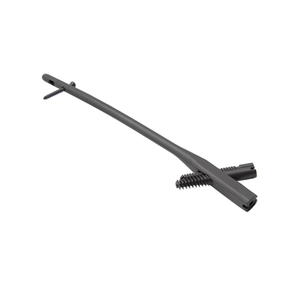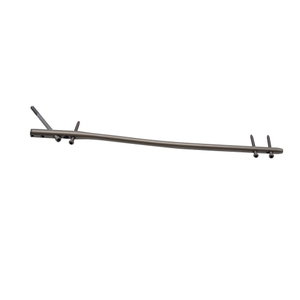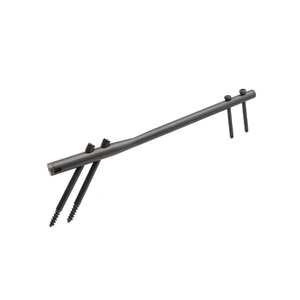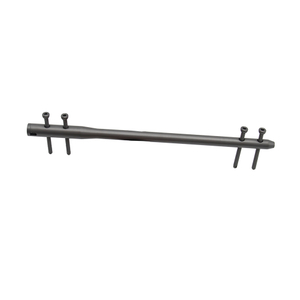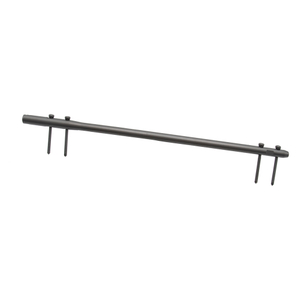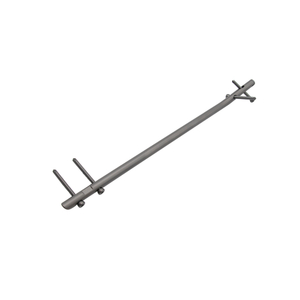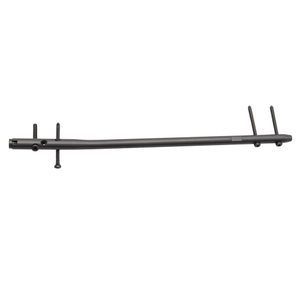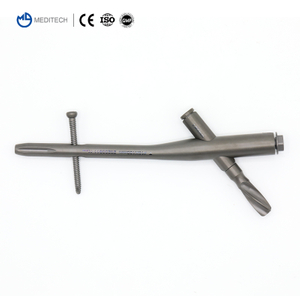Multi-Loc Humeral Nail: An Innovative Solution for Proximal Humerus Fractures
Proximal humerus fractures are common injuries that often affect elderly individuals with osteoporosis. These injuries can result in pain, loss of function, and even disability. Treatment of these fractures can be challenging due to the complex anatomy of the shoulder joint and the high risk of complications. The Multi-Loc Humeral Nail is a new device that has been developed to address these challenges. In this article, we will discuss the features, benefits, and limitations of the Multi-Loc Humeral Nail for the treatment of proximal humerus fractures.
Anatomy and Biomechanics of the Proximal Humerus
Before we discuss the Multi-Loc Humeral Nail, it is important to understand the anatomy and biomechanics of the proximal humerus. The proximal humerus consists of the humeral head, the greater tuberosity, the lesser tuberosity, and the shaft. The humeral head articulates with the glenoid fossa of the scapula to form the shoulder joint. The greater and lesser tuberosities serve as attachment sites for the rotator cuff muscles, which are critical for shoulder stability and function.
Proximal humerus fractures can involve the humeral head, the greater tuberosity, the lesser tuberosity, or the shaft. These fractures can result in displacement of the bone fragments, loss of bone stock, and damage to the surrounding soft tissues. The treatment of proximal humerus fractures depends on the severity of the injury, the degree of displacement, and the patient's age and activity level.
Current Treatment Options for Proximal Humerus Fractures
Current treatment options for proximal humerus fractures include non-surgical management, open reduction and internal fixation (ORIF), and shoulder arthroplasty. Non-surgical management may be appropriate for minimally displaced fractures in patients with low functional demands. ORIF involves surgical fixation of the fracture with plates, screws, or nails. Shoulder arthroplasty may be necessary in cases of severe displacement, comminution, or osteoporosis.
Despite advances in surgical techniques and implant designs, the treatment of proximal humerus fractures remains challenging. Complications such as implant failure, non-union, malunion, and avascular necrosis can occur, especially in elderly patients with poor bone quality. The Multi-Loc Humeral Nail is a new device that aims to improve the outcomes of proximal humerus fracture treatment.
Features and Benefits of the Multi-Loc Humeral Nail
The Multi-Loc Humeral Nail is a intramedullary device that is inserted into the proximal humerus to stabilize the fracture. The device consists of a nail, multiple locking screws, and a distal interlocking bolt. The nail is inserted into the medullary canal of the humerus and is locked in place with the locking screws. The distal interlocking bolt is inserted into the shaft of the humerus to prevent rotational and axial movement of the nail.
One of the key features of the Multi-Loc Humeral Nail is its multi-planar locking system. The locking screws can be inserted in multiple directions, allowing for enhanced stability and fixation of the fracture fragments. This multi-planar locking system also reduces the risk of implant failure and non-union.
Another benefit of the Multi-Loc Humeral Nail is its minimally invasive insertion technique. The nail can be inserted through a small incision and does not require extensive soft tissue dissection. This reduces the risk of complications such as infection, nerve injury, and poor wound healing.
The Multi-Loc Humeral Nail is also compatible with various surgical approaches, including the deltopectoral, anterior, and lateral approaches. This flexibility allows the surgeon to choose the best approach based on the location and severity of the fracture, as well as the patient's anatomy and comorbidities.
Furthermore, the Multi-Loc Humeral Nail is designed to preserve bone stock and minimize damage to the surrounding soft tissues. The nail is inserted into the medullary canal of the humerus, which preserves the periosteal blood supply and promotes fracture healing. Additionally, the locking screws can be inserted through small incisions, which reduces the amount of soft tissue dissection and preserves the rotator cuff attachments.
Limitations of the Multi-Loc Humeral Nail
Despite its many benefits, the Multi-Loc Humeral Nail has some limitations that must be considered. First, the device is not suitable for all types of proximal humerus fractures. The nail is most effective for two-part and three-part fractures with a valgus or varus angulation. For more complex fractures or fractures with significant comminution, other treatment options may be more appropriate.
Second, the insertion technique of the Multi-Loc Humeral Nail requires specialized training and expertise. The surgeon must be familiar with the anatomy and biomechanics of the shoulder joint, as well as the principles of fracture reduction and fixation. In inexperienced hands, the device can lead to complications such as malunion, non-union, and implant failure.
Lastly, the Multi-Loc Humeral Nail is a relatively new device and long-term data on its efficacy and safety are limited. While early results have been promising, more studies are needed to evaluate the long-term outcomes of the device and compare it to other treatment options.
Conclusion
In summary, the Multi-Loc Humeral Nail is an innovative device that offers several advantages for the treatment of proximal humerus fractures. Its multi-planar locking system, minimally invasive insertion technique, and compatibility with various surgical approaches make it a promising option for two-part and three-part fractures with a valgus or varus angulation. However, the device is not suitable for all types of proximal humerus fractures and requires specialized training and expertise for proper insertion. Further studies are needed to evaluate the long-term outcomes of the device and compare it to other treatment options.
FAQs
Is the Multi-Loc Humeral Nail suitable for all types of proximal humerus fractures?
No, the device is most effective for two-part and three-part fractures with a valgus or varus angulation.
Does the Multi-Loc Humeral Nail require extensive soft tissue dissection?
No, the device can be inserted through a small incision and does not require extensive soft tissue dissection.
What are the potential complications of using the Multi-Loc Humeral Nail?
Potential complications include malunion, non-union, and implant failure.
Can the Multi-Loc Humeral Nail be used with different surgical approaches?
Yes, the device is compatible with various surgical approaches, including the deltopectoral, anterior, and lateral approaches.
What is the long-term efficacy and safety of the Multi-Loc Humeral Nail?
Long-term data on the device's efficacy and safety are limited, and more studies are needed to evaluate its long-term outcomes and compare it to other treatment options.
සිංහල
English
Français
Русский
Español
العربية
Português
Deutsch
italiano
한국어
Tiếng Việt
ไทย
Polski
Türkçe
ພາສາລາວ
ភាសាខ្មែរ
Bahasa Melayu
ဗမာစာ
Filipino
Bahasa Indonesia
magyar
Română
Čeština
Монгол
қазақ
Српски
हिन्दी
فارسی
Kiswahili
Slovenčina
Slovenščina
українська
Ελληνικά
Latine
বাংলা
Afrikaans
Māori
नेपाली
Oʻzbekcha
latviešu
Azərbaycan dili
Беларуская мова
Български
Esperanto
ქართული
Kreyòl ayisyen
Kinyarwanda
Кыргызча
Lietuvių
Lëtzebuergesch
Malti
संस्कृत
Soomaali
Türkmençe
ئۇيغۇرچە

